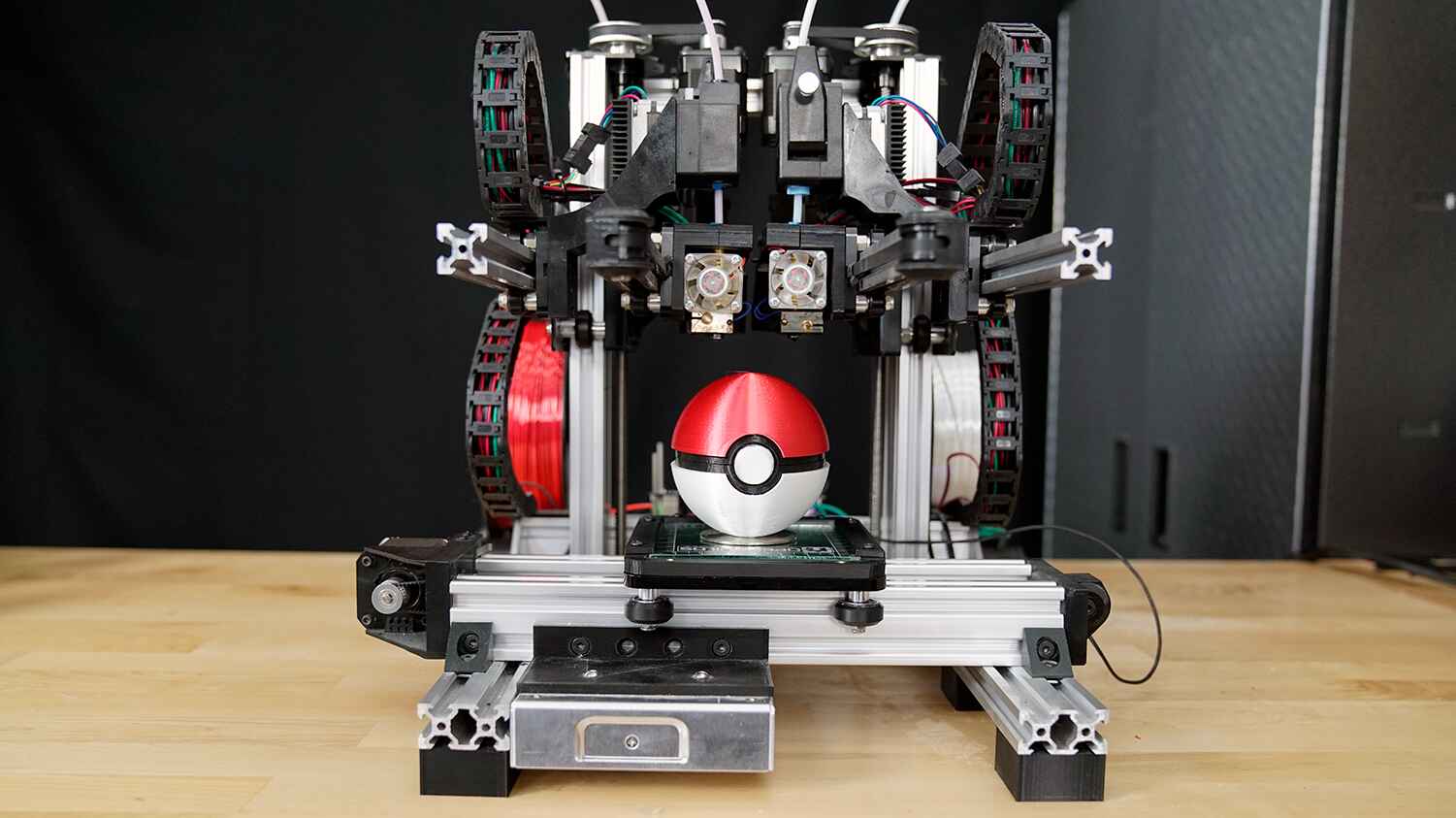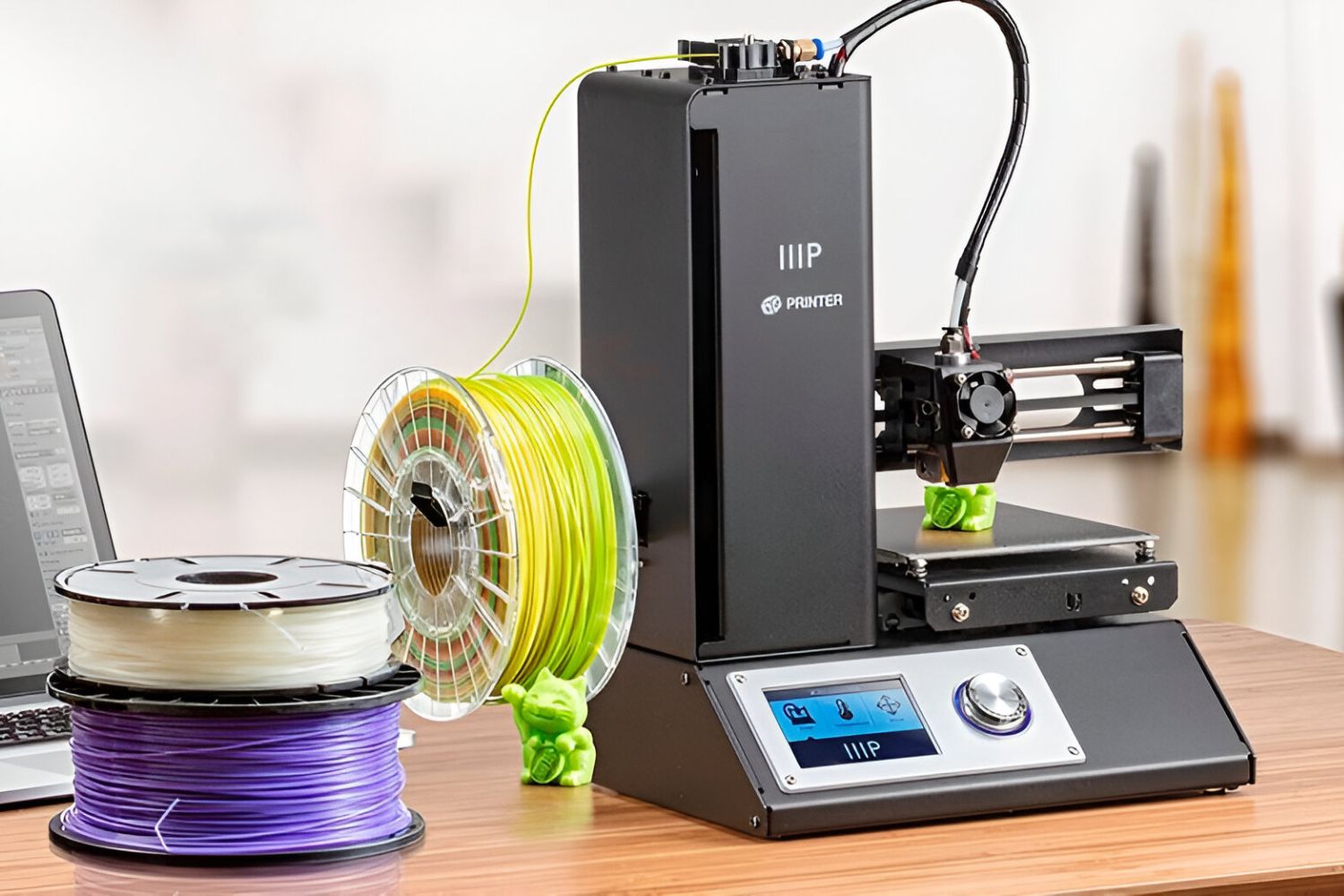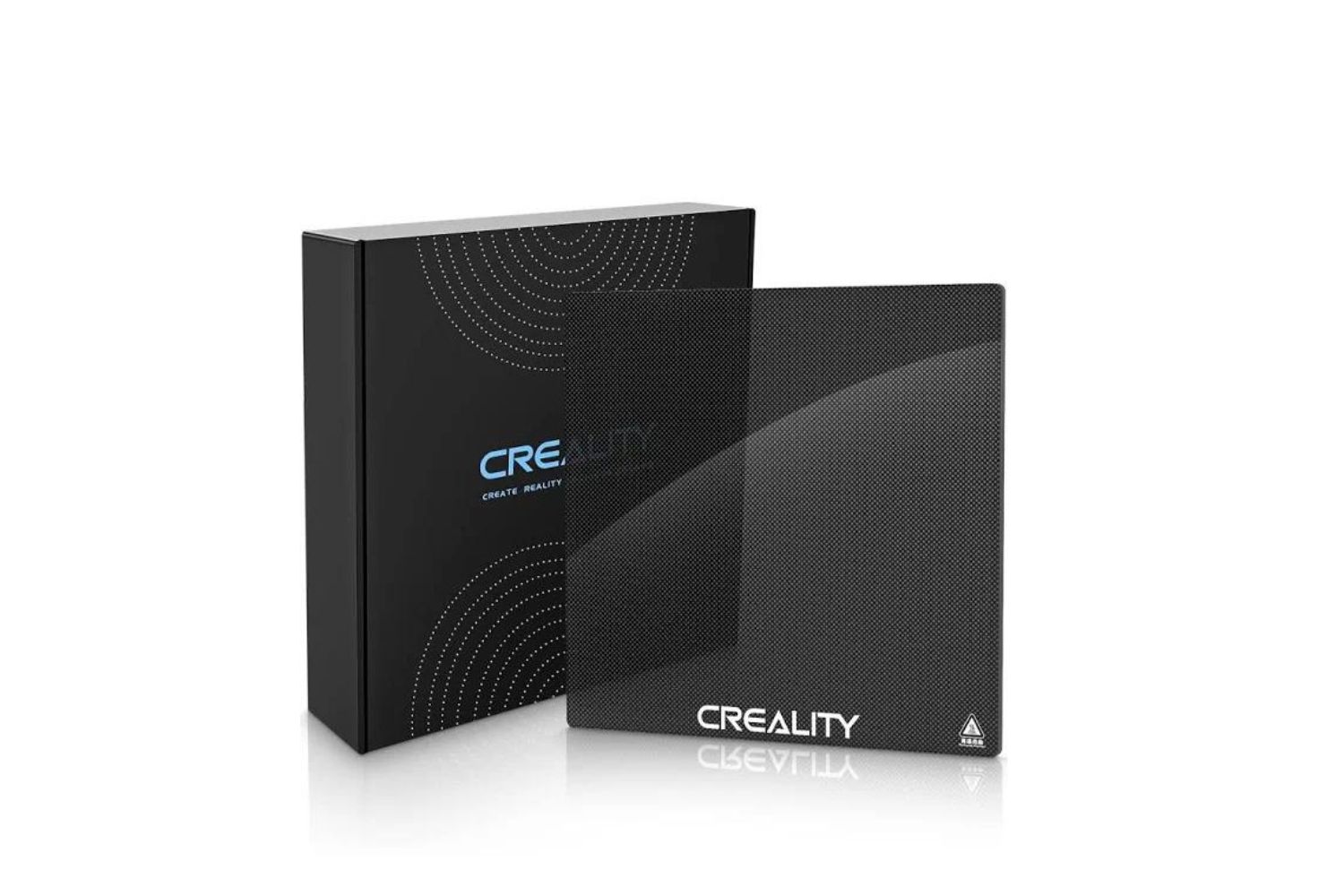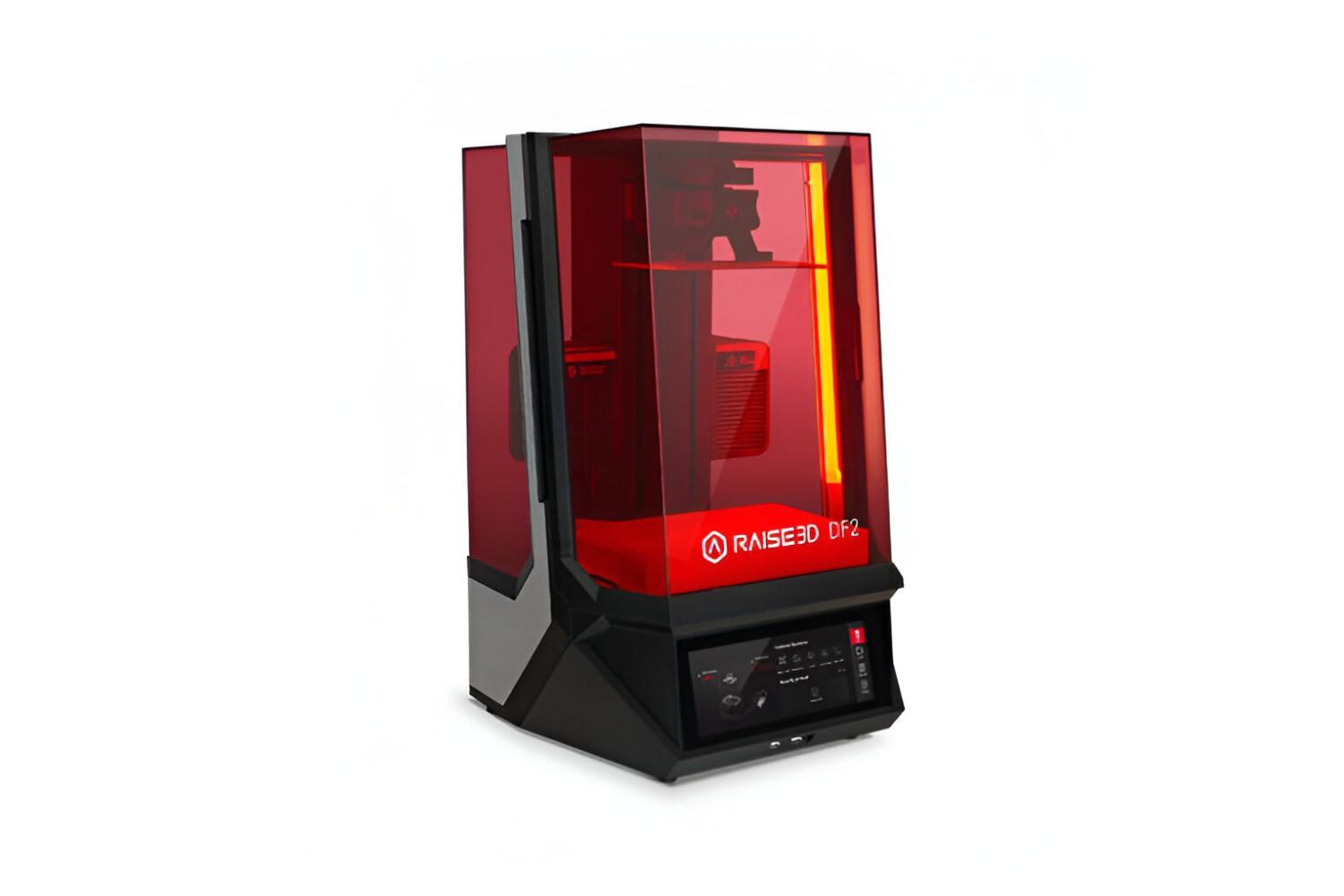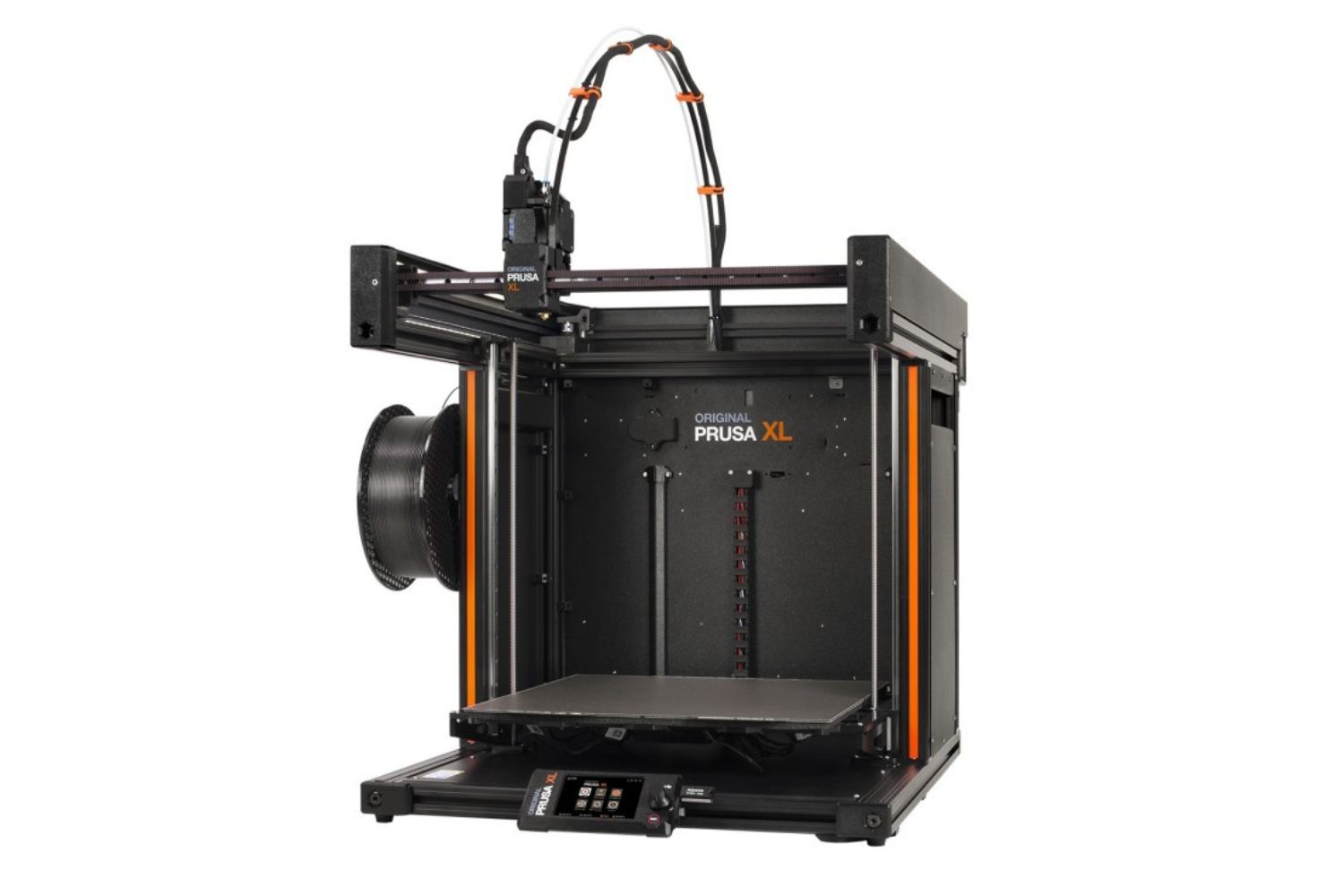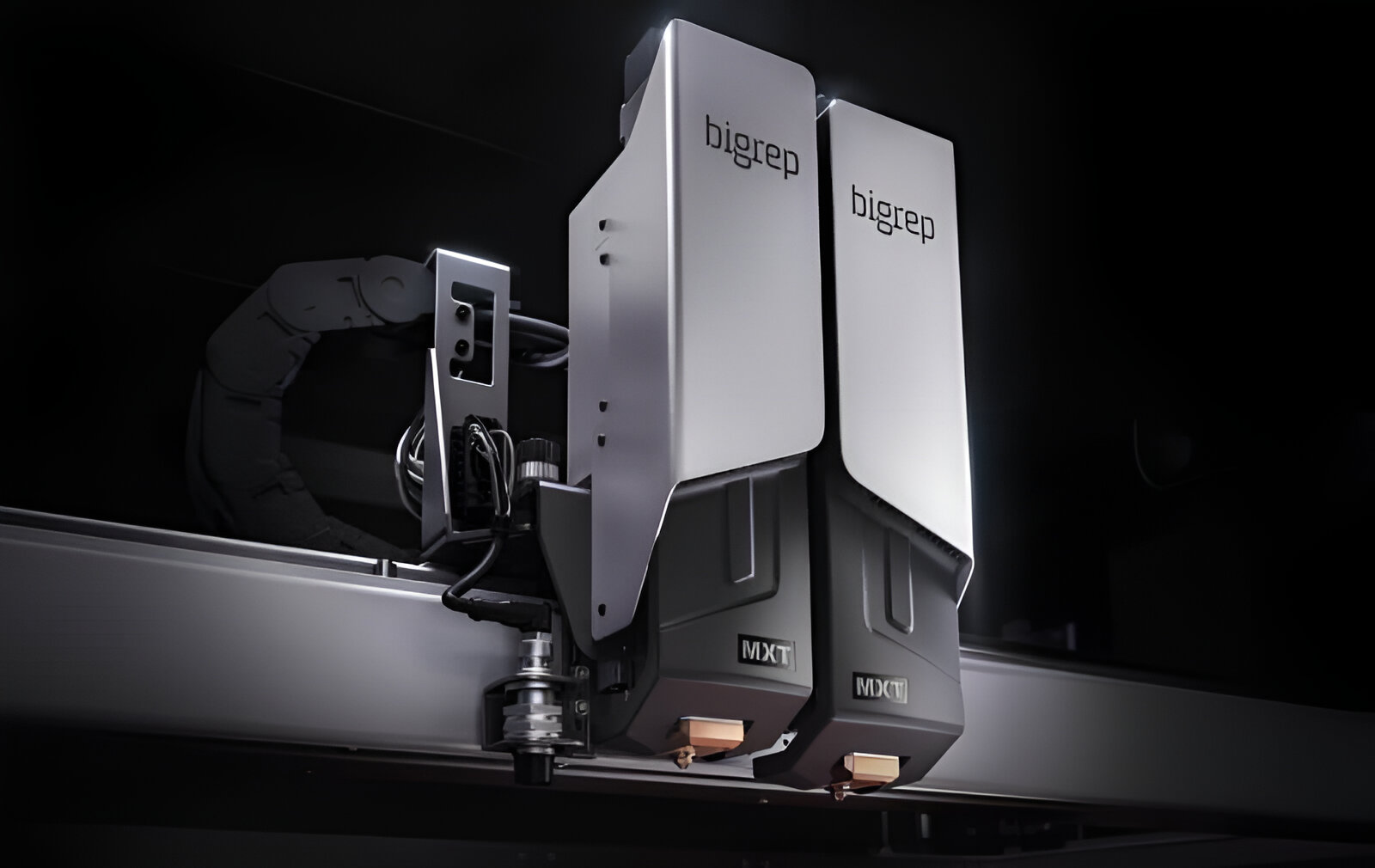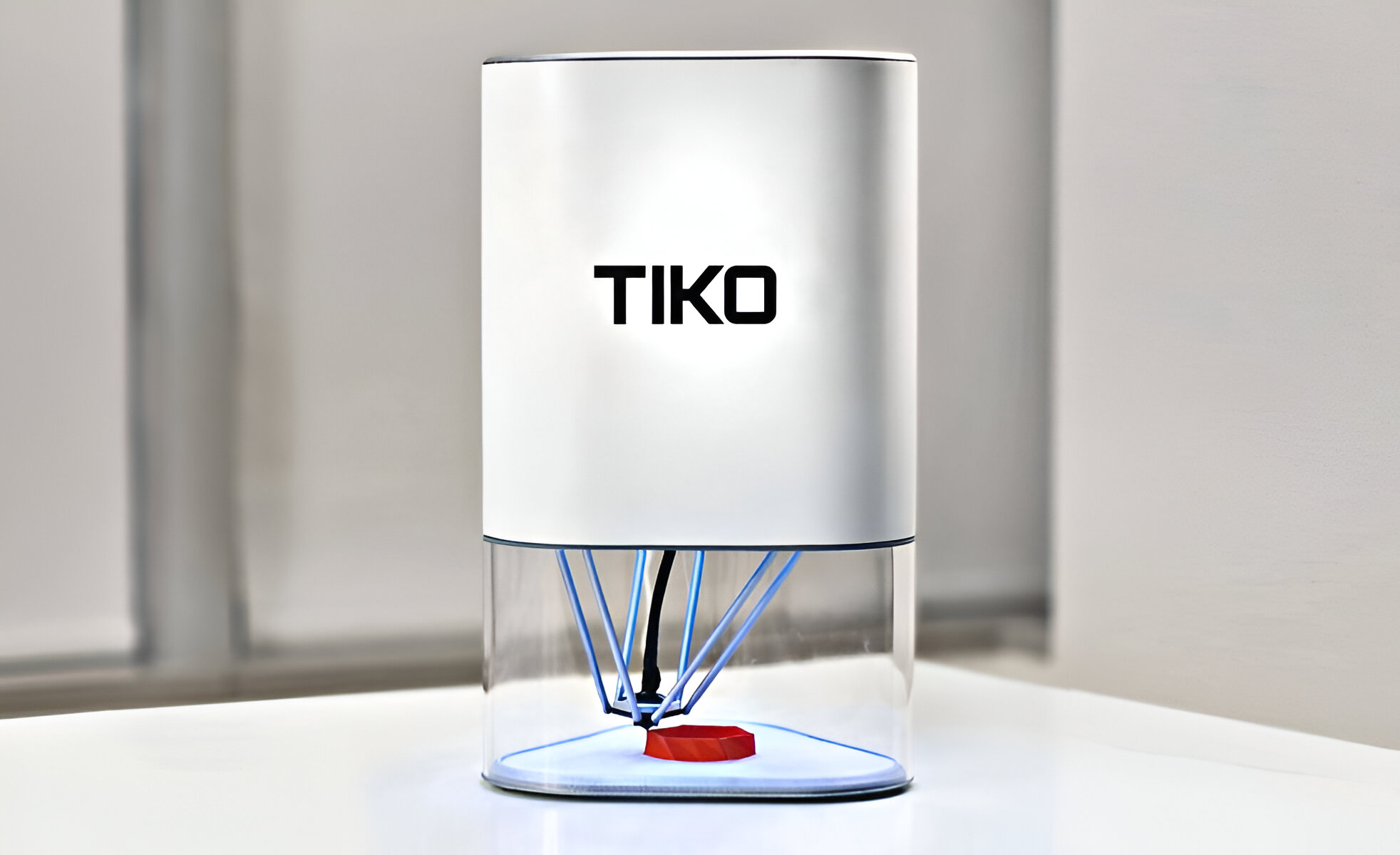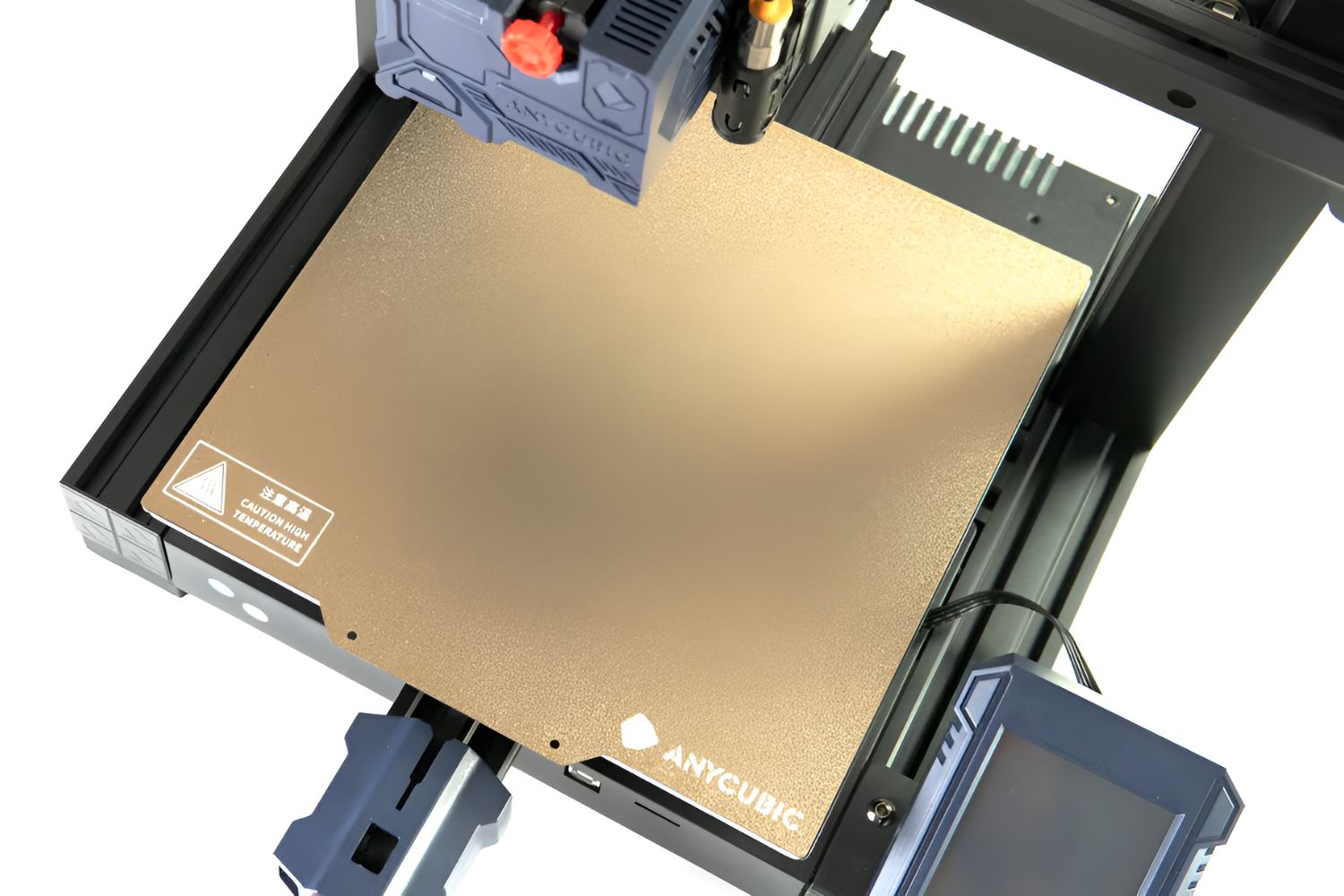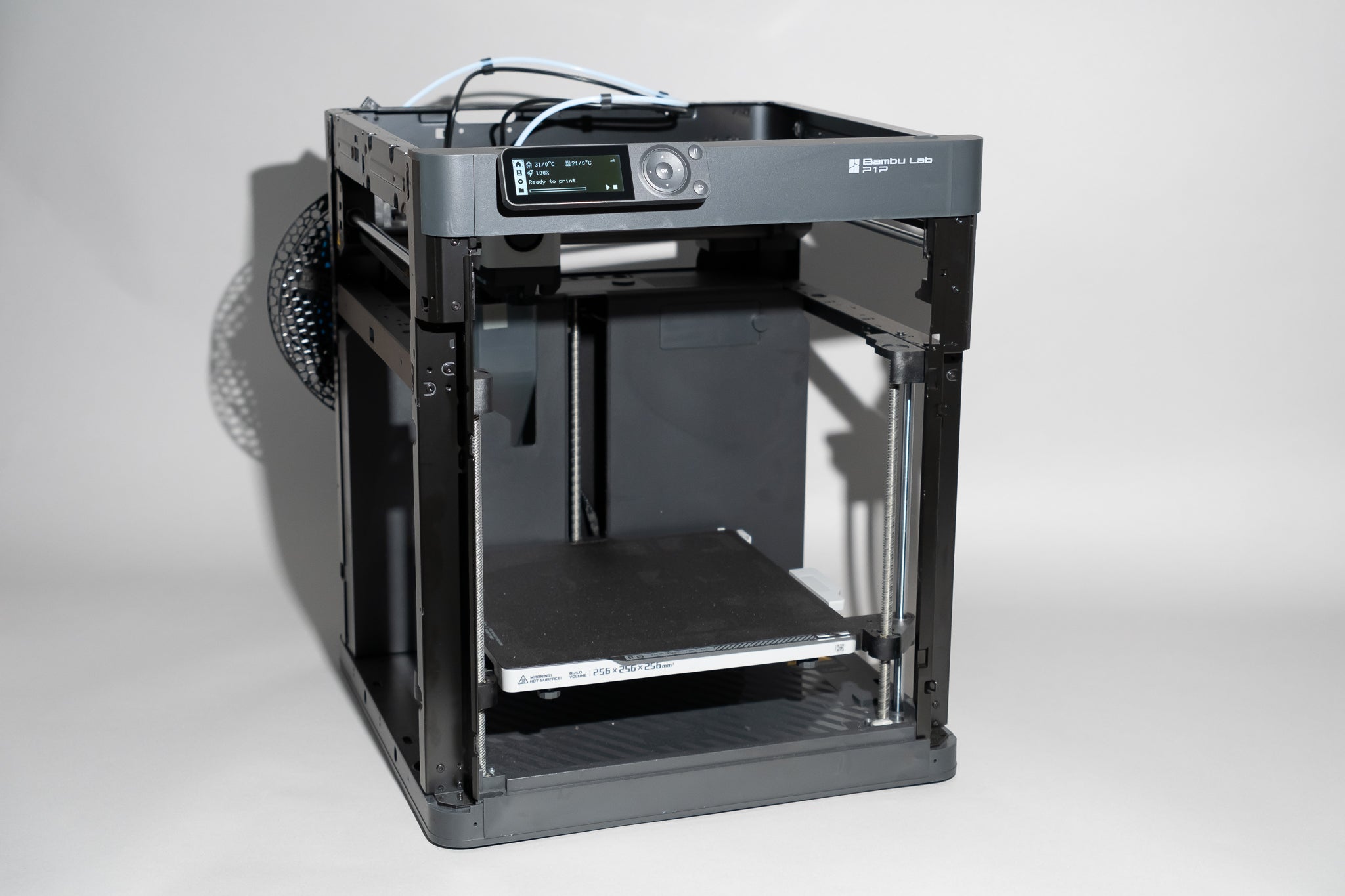Introduction
Welcome to the world of 3D printing, where imagination meets innovation. With the advent of 3D printers, the possibilities of what can be created are virtually limitless. From home decor to personalized gifts, toys to replacement parts, and prototypes to fashion accessories, the applications of 3D printing continue to expand.
3D printing works by building objects layer by layer using various materials such as plastics, metals, or ceramics. This technology has revolutionized the manufacturing industry, allowing for intricate designs and customization that traditional manufacturing methods cannot match.
Whether you are a hobbyist, a designer, an engineer, or simply someone looking to unleash your creativity, a 3D printer can be a valuable tool. You can bring your ideas to life, create functional objects, or even start your own small business.
In this article, we will explore the diverse range of items you can build with a 3D printer. From practical household items to unique fashion accessories, the possibilities are endless. So, let’s delve into the exciting world of 3D printing and discover the incredible things you can create.
Home Decor
Add a personal touch to your living space with 3D printed home decor items. From intricate vases to ornate lampshades, you can create unique pieces that reflect your style and personality. 3D printing allows you to experiment with different designs and materials, helping you achieve a custom look that perfectly complements your home.
One popular home decor item that can be 3D printed is wall art. Whether it’s a modern geometric design or a replica of a famous painting, 3D printed wall art adds a dimension of artistic flair to any room. You can also create decorative planters in various shapes and sizes to showcase your favorite plants.
Another fascinating aspect of 3D printing for home decor is the ability to create intricate and customizable lighting fixtures. You can design and print unique lampshades that cast mesmerizing patterns and shadows. Additionally, you can experiment with filament colors to match the decor of different rooms.
For those looking to add a touch of elegance to their space, 3D printed table centerpieces and candle holders are a great option. These can be designed to fit any theme or occasion, making them perfect for dinner parties, weddings, or special events. Plus, you can take pride in knowing that you created these pieces yourself.
Not only does 3D printing offer endless possibilities for home decor, but it also allows for functional and practical items. You can design and print storage solutions like organizers, hooks, and shelving units. These custom-made pieces not only maximize space but also add a unique touch to your home.
Whether you’re completely remodeling your living space or simply looking to add a few touches here and there, 3D printing opens up a world of possibilities for home decor. Let your imagination run wild and create pieces that are as functional as they are visually stunning.
Gadgets and Accessories
With a 3D printer, you can design and create a wide range of gadgets and accessories that can enhance your daily life. From smartphone cases to wearable tech, the possibilities are limitless. 3D printing allows you to customize these items according to your preferences, ensuring a perfect fit and a unique look.
One popular gadget that can be 3D printed is a phone stand. Whether you need a stand for watching videos or taking hands-free calls, you can design and print a stand that fits your specific phone model. You can also create custom phone cases that reflect your personality or match your style.
Aside from phone accessories, you can also 3D print wearable tech like fitness trackers or smartwatch bands. These can be customized to fit your wrist perfectly and can even include additional features such as compartments for small items or interchangeable components.
Additionally, 3D printing offers the opportunity to create unique and functional accessories like keychains, earphone holders, and cable organizers. These small items can make a big difference in keeping your belongings organized and easily accessible.
For music enthusiasts, 3D printing can be used to create custom-designed headphones or earbuds. Not only can you personalize the aesthetics, but you can also experiment with different materials to achieve the desired sound quality.
Another innovative application of 3D printing in the gadget and accessories realm is the creation of camera accessories. You can design and print tripod mounts, lens caps, and even camera grips tailored to your specific camera model.
Whether you’re looking to upgrade your gadgets or add unique accessories to your collection, 3D printing gives you the ability to design and produce personalized items. The ability to customize these gadgets and accessories allows you to truly make them your own, adding a touch of individuality and style to your daily life.
Toys and Games
3D printing has revolutionized the world of toys and games, offering endless opportunities for creativity and imaginative play. From action figures to puzzles, you can design and create toys and games that are unique to your interests and preferences.
One of the advantages of 3D printing toys is the ability to create custom action figures. Whether you want to bring your favorite superhero to life or design your own character, 3D printing allows you to make highly detailed and personalized figures. You can even create articulated joints for added poseability.
In addition to action figures, 3D printing opens up a world of possibilities for creating puzzles and board games. You can design intricate puzzles with complex interlocking pieces, or create a customized chess set with unique designs for each piece. The ability to customize the game board and pieces allows you to put a personal touch on classic games.
Another exciting area in 3D-printed toys is remote-controlled vehicles. You can design and build your own robotic vehicles, aircraft, or even drones. This not only provides an engaging hands-on experience, but it also allows you to understand the mechanics behind these machines.
For the younger ones, 3D printing can be used to create educational toys that promote learning and development. From building blocks to shape sorters, you can design toys that enhance cognitive skills while providing a fun and engaging playtime experience.
3D printing also offers the opportunity to create unique and intricate dollhouses, doll accessories, and doll clothing. You can design and print furniture, miniature decorations, and even customizable outfits for dolls, allowing for endless creative possibilities.
Whether you’re a child at heart or looking to create toys for the little ones in your life, 3D printing allows you to bring imagination to life. The customization options, attention to detail, and the ability to design entirely unique toys and games make 3D printing a game-changer in the world of play and entertainment.
Prototypes and Models
One of the most practical applications of 3D printing is for creating prototypes and models. Whether you’re an engineer, designer, or inventor, 3D printing allows you to bring your ideas to life in a tangible form.
With 3D printing, you can quickly iterate and refine your designs by creating prototypes. This enables you to test the functionality, ergonomics, and aesthetics of a product before committing to mass production. By having a physical model in your hands, you can make necessary adjustments and improvements to ensure the final product meets your requirements.
In the field of architecture and urban planning, 3D printing is revolutionizing the way models are created. Architects and designers can now 3D print scaled-down, highly detailed models of their building designs. This allows clients and stakeholders to have a visual representation of the project, aiding in decision-making and ensuring accurate communication.
Furthermore, 3D printing is invaluable in the medical field for creating anatomical models. Surgeons can use these models for pre-surgical planning, allowing them to visualize complex procedures in a three-dimensional format. This enables better understanding and preparation, ultimately leading to improved patient outcomes.
3D printing also plays a crucial role in the manufacturing industry by providing a cost-effective method for creating molds and tooling. These 3D-printed molds allow for the production of small-batch prototypes and custom parts, reducing the time and cost associated with traditional methods.
Another exciting application of 3D printing is in the design and creation of architectural models for landscape and city planning. These models can accurately represent topographical features, infrastructure, and proposed developments. This aids in visualizing potential spatial designs and evaluating the impact on the surrounding environment.
Whether you’re developing a new product, planning a building, or exploring complex concepts, 3D printing provides a valuable tool for creating prototypes and models. Its ability to bring ideas to life in a tangible form revolutionizes the design and development process, accelerating innovation and driving progress in various industries.
Customized Gifts
When it comes to gift-giving, nothing beats the personal touch of a customized gift. With 3D printing, you have the power to create truly unique and meaningful presents that are tailored to the recipient’s tastes and interests.
One popular customized gift option is personalized jewelry. From intricately designed pendants to stylish bracelets, you can create one-of-a-kind pieces that carry sentimental value. You can incorporate initials, names, or even special symbols to symbolize a special bond or memory.
For movie buffs and pop culture enthusiasts, 3D printing offers the opportunity to create custom figurines or replicas of iconic props. Imagine gifting a miniature replica of the Millennium Falcon or a 3D-printed statue of a beloved character. These gifts not only showcase your thoughtfulness but also demonstrate your understanding of the recipient’s passions.
Another unique gift idea is creating custom-designed phone cases. You can 3D print cases with personalized designs, photos, or messages. This allows the recipient to have a phone case that is not only stylish but also holds a special meaning.
3D printing also opens up possibilities for creating personalized home decor items. You can design and print customized photo frames, decorative key holders, or even functional objects like personalized coasters. These gifts can add a personal touch to any living space and serve as a constant reminder of a cherished memory or relationship.
When it comes to customized gifts, the options are truly endless. You can design and create personalized keychains, desk accessories, or even specialized tools tailored to the recipient’s hobbies or profession. The ability to add a personal touch and create something unique demonstrates the thought and effort put into the gift.
Whether it’s a birthday, anniversary, or any special occasion, a 3D-printed customized gift can leave a lasting impression. It shows that you went the extra mile to create something truly special, tailored specifically to the recipient. The thoughtfulness and personalization behind these gifts make them priceless and treasured keepsakes.
Educational Tools
3D printing has become a valuable tool in education, providing unique opportunities for hands-on learning and fostering creativity and critical thinking skills. From anatomy models to scientific experiments, 3D printing offers a new dimension to educational tools.
One area where 3D printing excels in education is in the creation of anatomical models. Students studying biology or medicine can benefit greatly from having accurate and detailed 3D-printed models of various body parts. These models allow for a more interactive and immersive learning experience, enabling students to visualize complex structures and understand their functions.
In addition to anatomy models, 3D printing can be used to create models of historical artifacts or archaeological finds. By examining and handling replicas of objects from different time periods, students can gain a deeper understanding of history and cultural heritage.
Furthermore, 3D printing can facilitate the creation of customized educational aids for students with special needs. From tactile maps for visually impaired individuals to sensory tools for those with learning disabilities, 3D printing allows for personalized and inclusive learning experiences.
3D printing in the field of science education is also gaining traction. Students can design and print models of molecules, cells, or even planetary systems to better comprehend complex scientific concepts. This hands-on approach enhances their understanding and encourages exploration and experimentation.
Additionally, 3D printing enables the creation of prototypes and models for engineering and design education. Students can design and print their inventions, replicating the iterative design process of real-world engineers. This fosters creativity, problem-solving, and critical thinking skills as they work through the challenges and improvements of their creations.
Another area where 3D printing is making an impact is in the field of robotics education. Students can design and print robot parts, allowing them to build and program their own robots. This practical hands-on approach introduces them to coding, engineering principles, and the mechanics of robotics.
3D printing provides an avenue for innovative and engaging educational tools that enhance learning experiences across various disciplines. Through its ability to create tangible and interactive models, it empowers students to explore, experiment, and deepen their understanding of complex concepts.
Replacement Parts
One of the most practical applications of 3D printing is the creation of replacement parts. Whether it’s for household appliances, electronics, or even automotive components, 3D printing offers a cost-effective and efficient solution for obtaining hard-to-find or obsolete parts.
With 3D printing, you can design and produce custom-made replacement parts that perfectly fit your needs. Instead of spending time and money searching for a specific part or waiting for it to be shipped, you can simply 3D print the part at home or at a local 3D printing service.
This is particularly beneficial for older devices or equipment that may no longer be in production, as finding replacement parts can be a challenge. By 3D printing the needed component, you can extend the lifespan of your devices and avoid the need for a complete replacement.
Another advantage of 3D printed replacement parts is the ability to improve upon the original design. If you encounter a recurring issue with a particular part, you can modify the design before 3D printing it. This allows you to address any flaws or weaknesses, resulting in a more durable and efficient replacement.
3D printed replacement parts are not limited to small household items. They can also be used for automotive repairs, allowing car owners to fix minor issues without having to rely on expensive or hard-to-source parts. This not only saves money but also minimizes downtime and enables more convenient repairs for vehicle owners.
Moreover, 3D printing replacement parts may also contribute to reducing waste and promoting sustainability. Instead of disposing of an entire product due to a faulty component, 3D printing allows for targeted repairs, prolonging the life of the product and reducing environmental impact.
While there may be limitations to the materials and complexity of some replacement parts that can be 3D printed, the technology continues to advance, offering more options and possibilities. With the ability to create customized replacement parts on-demand, 3D printing is changing the way we approach repairs and maintenance.
Fashion and Jewelry
3D printing has made a significant impact on the fashion and jewelry industry, offering designers and consumers a new realm of creative possibilities. With the ability to bring intricate and personalized designs to life, 3D printing is revolutionizing the way we think about fashion and jewelry.
One of the advantages of 3D printing in the world of fashion is the ability to create unique and avant-garde designs. Designers can experiment with complex geometries and create elaborate patterns and textures that would be challenging to achieve through traditional manufacturing techniques.
With 3D printing, jewelry designers can push the boundaries of creativity. They can create intricate and detailed designs that are impossible to replicate through traditional craftsmanship. From delicate filigree patterns to bold statement pieces, 3D printing allows for unparalleled design freedom.
Moreover, 3D printing allows for customization in fashion and jewelry like never before. Customers can order personalized jewelry pieces that feature their names, initials, or even 3D representations of their favorite objects. This creates a deeper connection between the wearer and the piece, making it more meaningful and unique.
Besides individualized accessories, 3D printing is also used to create fashion items like shoes and clothing. By 3D printing shoe soles or components, designers can tailor the fit and functionality of footwear to individuals. In clothing, designers can experiment with innovative materials and structures, resulting in garments with unique textures and shapes.
Another exciting aspect of 3D printed fashion is sustainability. 3D printing allows for on-demand production, reducing waste from overproduction and excess inventory. It also enables the use of recyclable materials in the printing process, contributing to more environmentally friendly production practices.
Furthermore, 3D printing has also opened doors for up-and-coming designers and independent artisans. With the accessibility and affordability of 3D printers, designers can bring their designs to life without the need for large-scale manufacturing facilities. This democratizes the fashion industry and fosters a culture of innovation and entrepreneurship.
Whether it’s creating eye-catching statement pieces or personalized accessories, 3D printing is transforming the fashion and jewelry industry. Its ability to push boundaries, embrace customization, and promote sustainability makes it one of the most exciting and disruptive technologies in the field of fashion today.
Tools and Equipment
3D printing has become more than just a means for creating decorative items or prototypes. It has also proven to be invaluable in the realm of tools and equipment, offering innovative solutions for various industries and DIY enthusiasts alike.
One of the key benefits of 3D printing in this domain is the ability to customize tools for specific purposes. Whether it’s a specialized tool for a specific task or a tool with an ergonomic design, 3D printing allows for the creation of unique and tailored solutions. This customization can enhance efficiency and safety in various work environments.
From small hand tools to complex machinery components, 3D printing provides the opportunity to replace broken or missing parts quickly and cost-effectively. Instead of waiting for replacements to be sourced or manufactured, companies and individuals can design and 3D print the required parts on-demand, minimizing downtime and increasing productivity.
Furthermore, 3D printing enables the creation of lightweight tools and equipment without compromising strength and durability. This is particularly beneficial in industries where weight reduction is crucial, such as aerospace or automotive manufacturing. With 3D printing, intricate lattice structures can be designed, resulting in lightweight yet strong tools and components.
DIY enthusiasts can also benefit from 3D printing by creating their own custom-made tools for various projects. From clamps and jigs to measuring devices, the ability to design and print specific tools allows for greater flexibility and precision in DIY endeavors.
Another fascinating application of 3D printing in the tools and equipment sector is the creation of prosthetics and assistive devices. With the design flexibility offered by 3D printing, prosthetics can be tailor-made to fit an individual’s unique requirements, improving comfort and functionality.
3D printing also plays a role in the medical field beyond prosthetics, where customized surgical tools and guides can be created for delicate procedures. These tools can be designed to match the patient’s anatomy, enabling surgeons to perform operations with greater accuracy and reduced risks.
Whether it’s replacing broken parts, customizing tools, or creating specialized equipment, 3D printing is revolutionizing the way we approach tools and equipment across various industries. Its flexibility, customization options, and cost-effectiveness make it a game-changer in the world of manufacturing and DIY.







